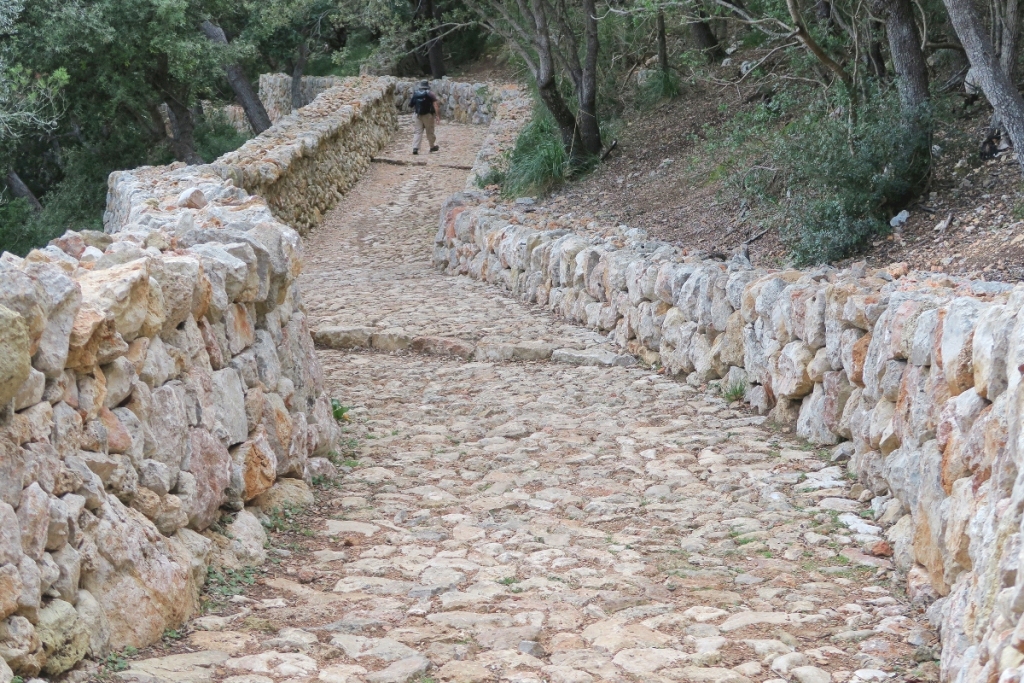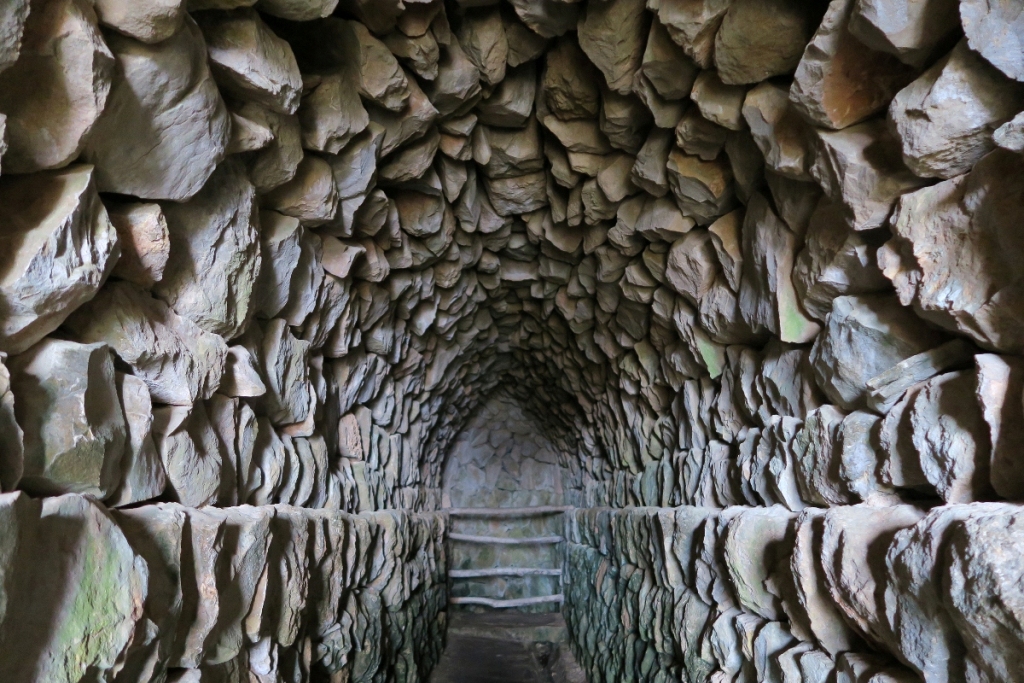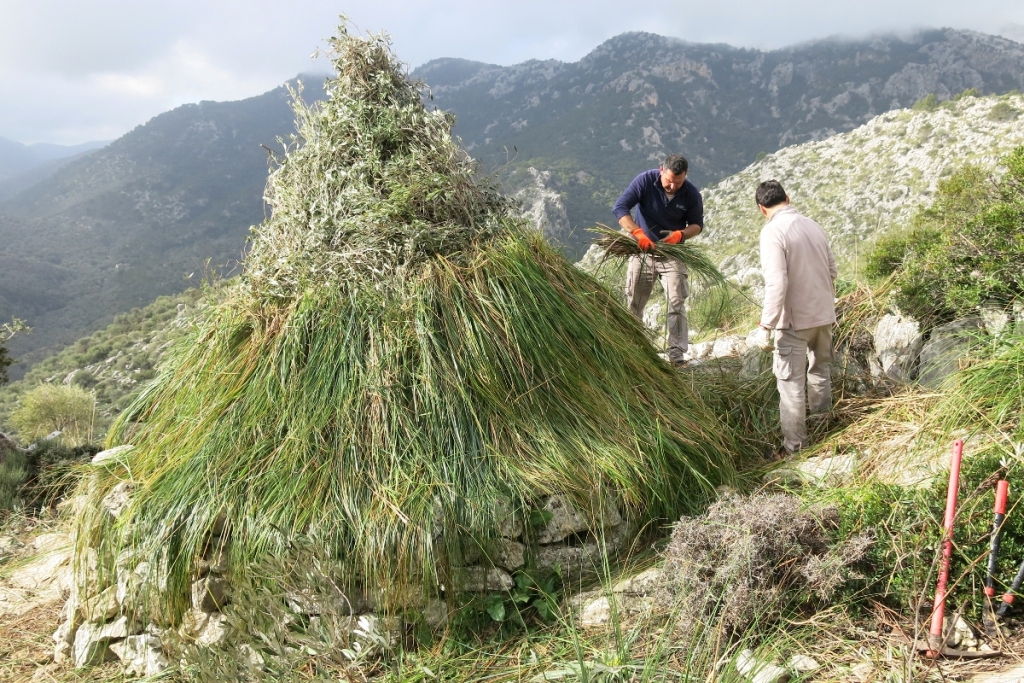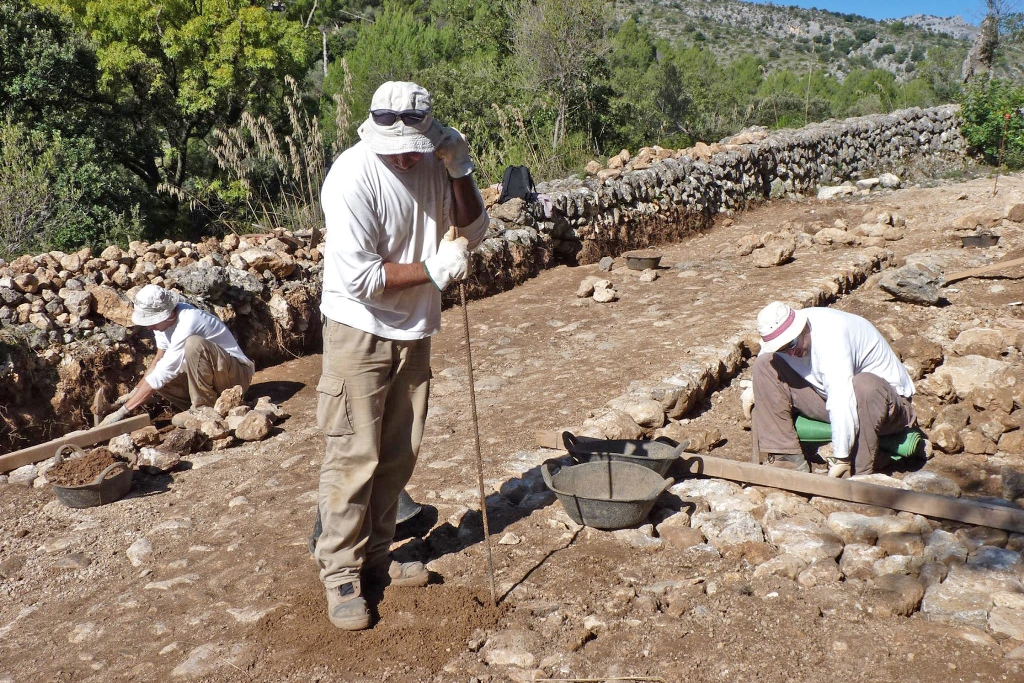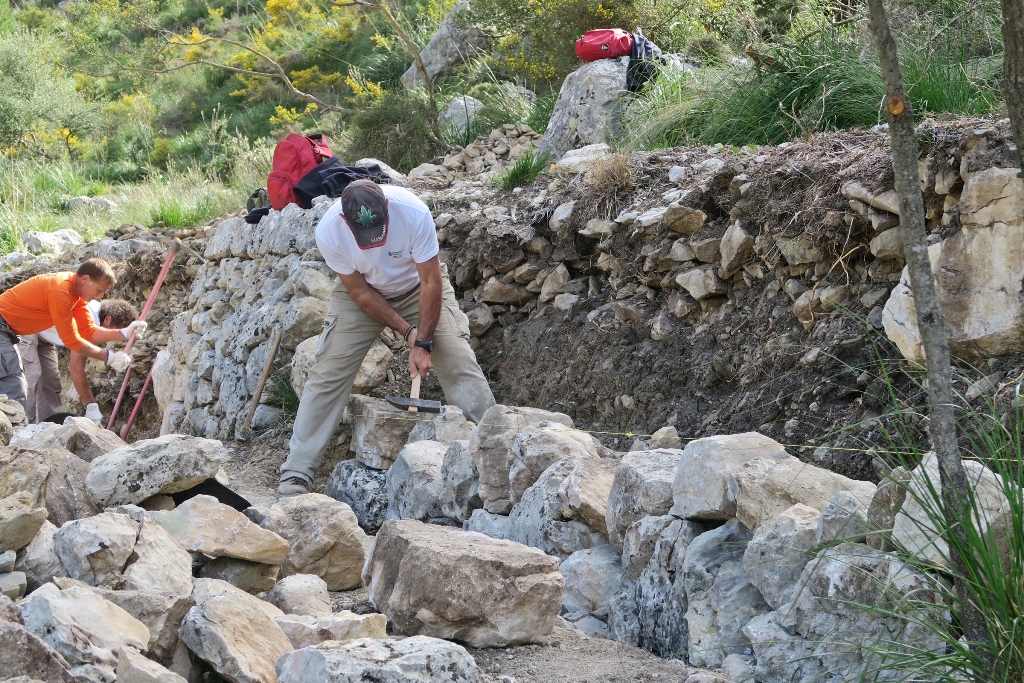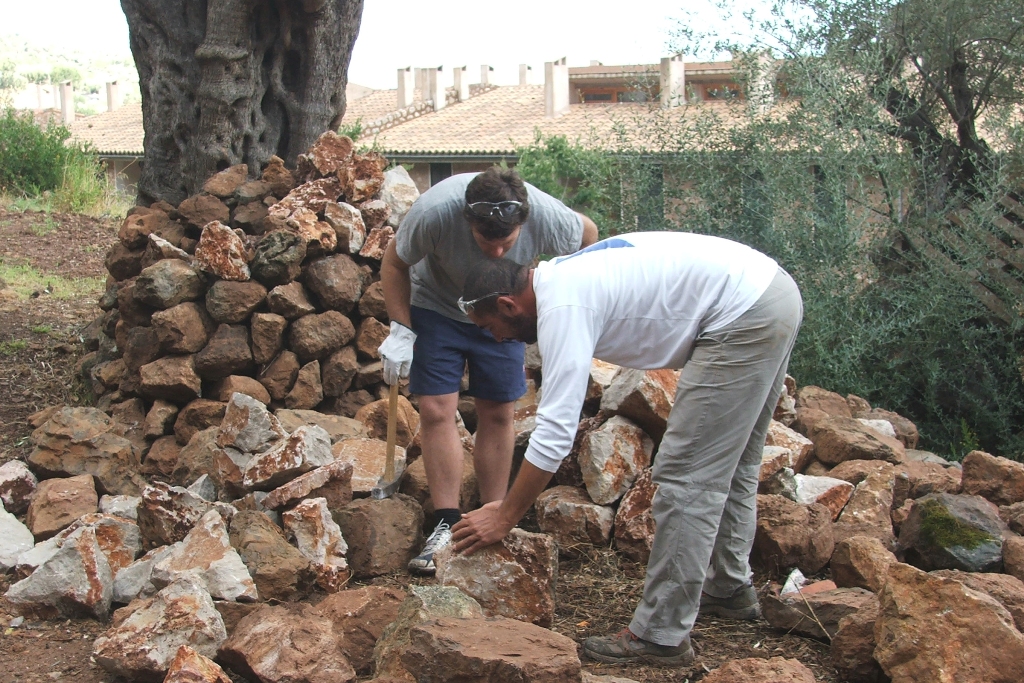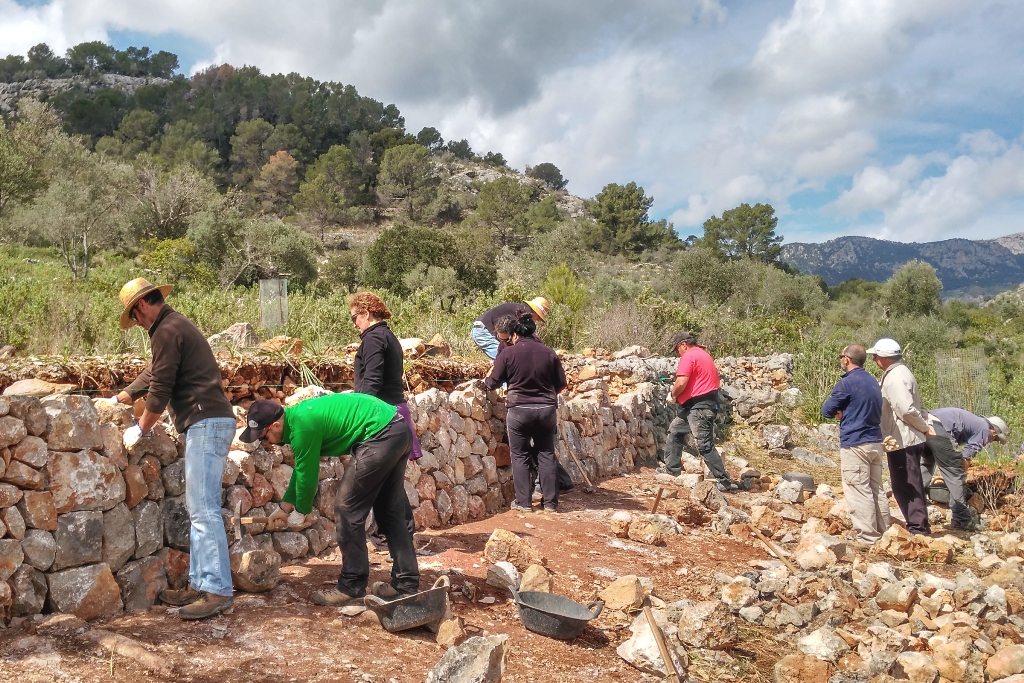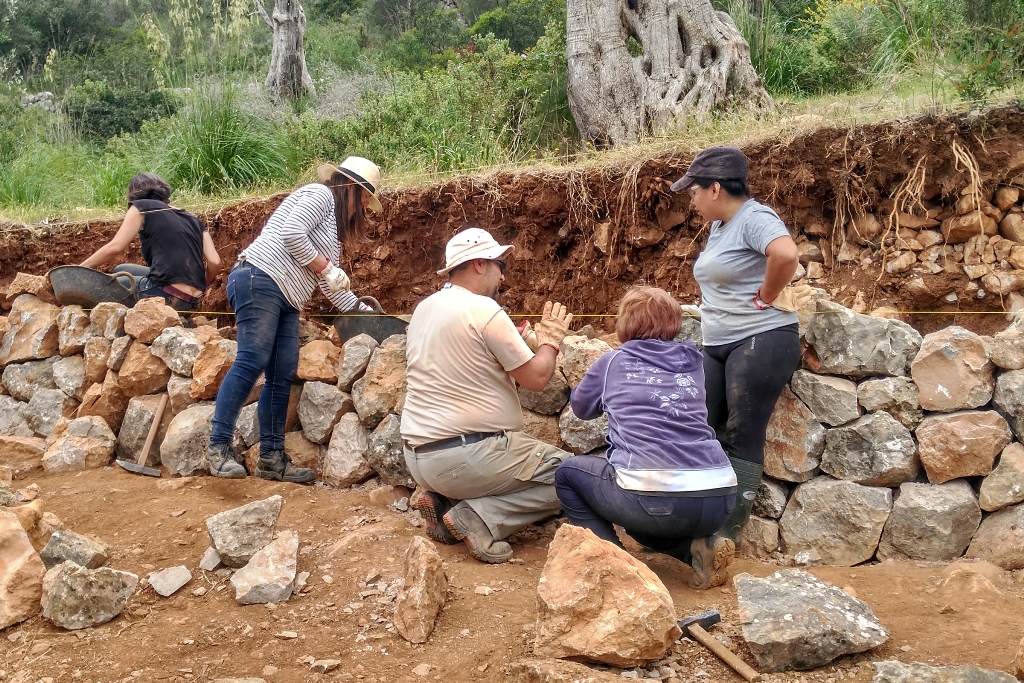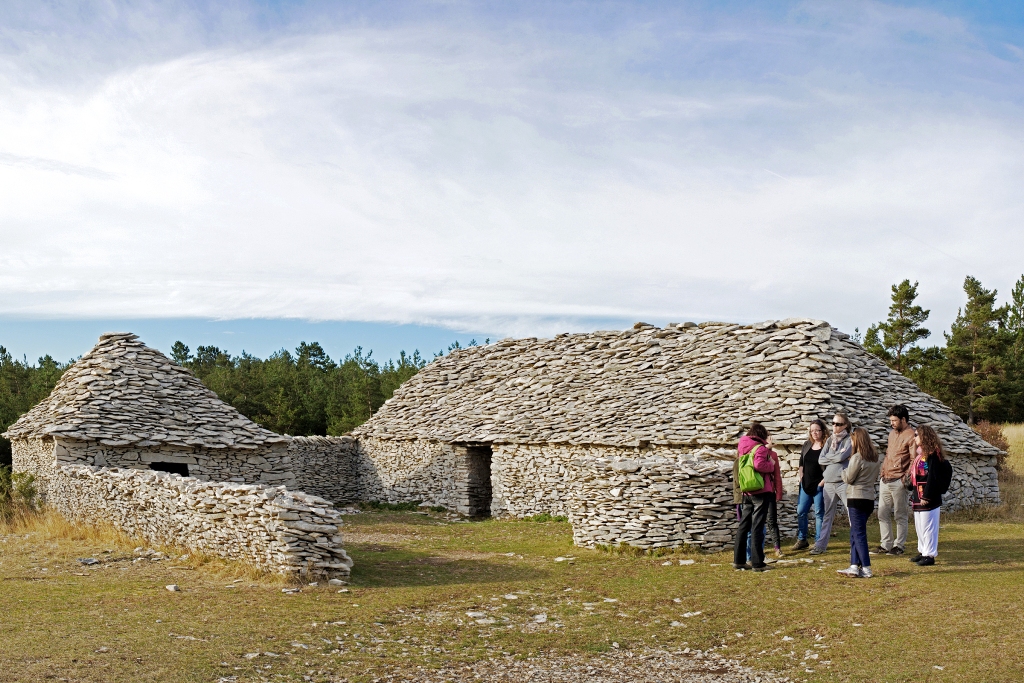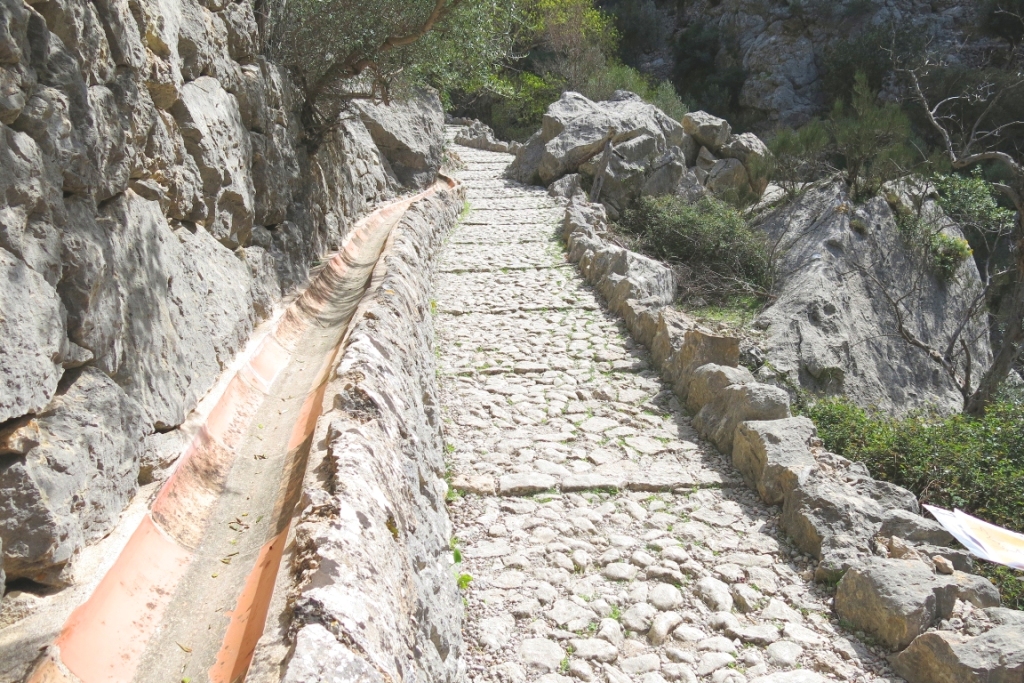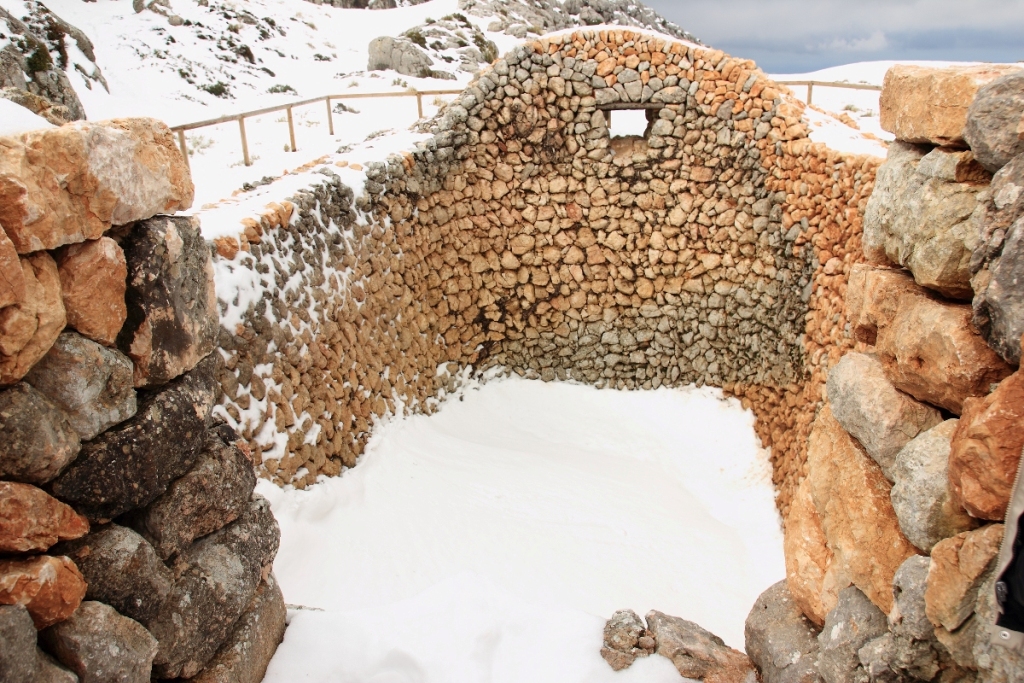Placing one stone on top of the next without cement or mortar to bind them together — that is how many structures have been built on this island. Such constructions were used for a number of things, and examples can be seen in the form of terraced, supporting stone walls known locally as marges, allowing slopes to be cultivated, and walls demarcating properties and fields. The technique was also used to construct a vast network of paths where it is still common to come across stone-paved sections.
The charcoal-maker rotlos still stand in woodland areas where they were used in charcoal production work. In these same areas you will also find typical lime kilns that were used to produce a material essential for construction work as well as cleanliness and hygiene.
Dry stone fountains, cocons, and ponds helped people survive on land with very limited water resources. In the higher parts of the island snow houses were built, the cases de neu. Snow was stored in these houses and used for both medical and gastronomic purposes.
Refuges, cabins and sheds were constructed for people, animals and tools, completing the process of adapting the habitat to human need.
The dry stone technique is still in use today and has left us with a unique heritage of great value for future constructions, showing an example of natural integration.
Protected dry stone buildings
Laws and urban regulations are applied to protect heritage and help safeguard dry stone constructions, to ensure this legacy is preserved.
In Mallorca the denomination ‘asset of cultural interest’ (Spanish acronym: BIC) has been used to preserve three large-scale heritage centres with examples of dry stone technique: the Camí des Barranc path in Biniaraix, the snow wells and adjoining constructions on the Massanella massif, and the Rotes de Caimari terraces.
Further, the Territorial Plan of Mallorca that governs municipal land regulation states under point five that it is obligatory to include dry stone walls of aesthetical and environmental value in municipal catalogues, and the same goes for terraces, dry stone fountains, cabins, lime kilns, cases de neu (snow houses), charcoal production floors and stone-paved paths. The latter must also include ownership information.
During the 80s the craft of marger was on the point of disappearing, mainly due to lack of demand and the old age of the dry stone masters. In 1986 a Dry Stone Walling School was founded in Sóller; its purpose was to restore the Barranc de Biniaraix walking path and to train specialists in the art of dry stone walling. Two years later the Consell de Mallorca took over management of the school and further extended its goals.
Since then the Consell has held several dry stone walling courses. Initially they were workshop school programs aimed at youth between sixteen and twenty-four years of age and unemployed. Later they acquired more of an occupational workshop character and are now aimed at unemployed people over twenty-five years of age. These programs have proven very successful, as theory and practice are combined with real work.
Nowadays courses for beginners are also organised for those without experience wishing to learn more about dry stone walling. The aim of these courses is to bring the technique closer to the local population and give them the basic knowledge needed to carry out less extensive maintenance work.
Contact "Escola de Margers de Mallorca"
escolademargers@conselldemallorca.net
Tel. : 971 00 77 03
Since 1987 the Consell de Mallorca has been working on the recovering and conservation of the dry stone heritage. First, through the schools, workshops for margers (majorcan dry stone wallers), and later in the framework of various programs, in which collaboration with municipalities and participation in European projects has been very important.
A large number of roads have been recovered, including emblematic trails such as the old path to Lluc , the Camí del Barranc de Biniaraix, the Camí des Correu, Ses Voltes d'en Galileu and others.
In its surroundings, retaining walls and enclosure walls have been straightened, barracks and bunkers have been recovered and snow houses and snowfields have been restored. Altogether, a very representative sample of the ethnological heritage of Mallorca.
During the 80s the craft of marger was on the point of disappearing, mainly due to lack of demand and the old age of the dry stone masters. In 1986 a Dry Stone Walling School was founded in Sóller; its purpose was to restore the Barranc de Biniaraix walking path and to train specialists in the art of dry stone walling. Two years later the Consell de Mallorca took over management of the school and further extended its goals.
Since then the Consell has held several dry stone walling courses. Initially they were workshop school programs aimed at youth between sixteen and twenty-four years of age and unemployed. Later they acquired more of an occupational workshop character and are now aimed at unemployed people over twenty-five years of age. These programs have proven very successful, as theory and practice are combined with real work.
Nowadays courses for beginners are also organised for those without experience wishing to learn more about dry stone walling. The aim of these courses is to bring the technique closer to the local population and give them the basic knowledge needed to carry out less extensive maintenance work.
Contact "Escola de Margers de Mallorca"
escolademargers@conselldemallorca.net
Tel. : 971 00 77 03

